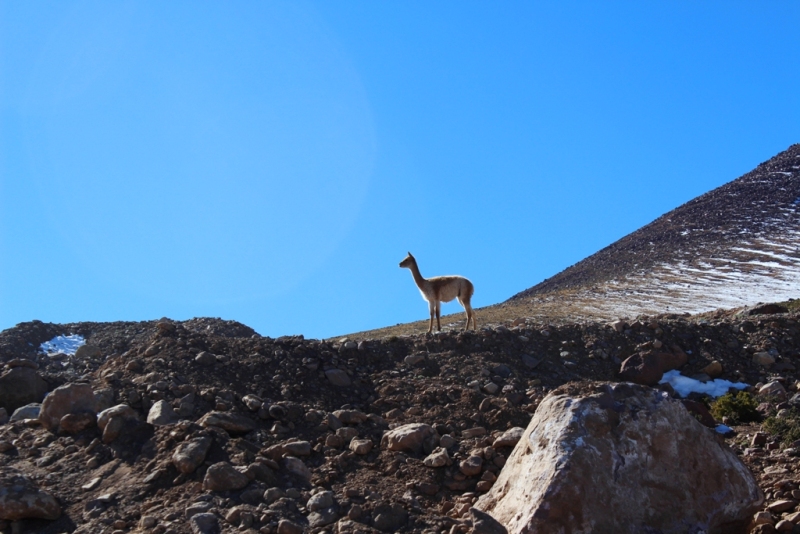
Updated 7/6/17
The Atacama Large Millimeter/submillimeter Array is an astronomical interferometer of radio telescopes in the Atacama desert of northern Chile. There are 66 antennas, each one about 40 feet wide. The array took almost a decade to build and cost over $1 billion US. It is considered the most powerful radio telescope in the world. By some measures, this is the driest place on Earth, with "no significant rainfall" for centuries(!) It does, however, snow on occasion. The region got almost 3 feet of snow the week before we got there. However, the place is so dry, the snow sublimates almost immediately and simply disappears.
This is serious business. The "low site" site sits at 9900 feet, the highest location yet for us. At this point at least four of us had experienced at least mild altitude sickness at some point in the trip. Things were about to get a lot higher. In order to be allowed to go to the high site, we each needed to pass a physical at the low site. A medic would measure our pulse, blood pressure, and blood O2 level. There is no room for negotiation; you fail the test, you stay at the low site. At 16,700 feet, over 50% of the earth's oxygen is below you.
Even those allowed to go to the high site are only allowed 2-3 hours before descent is mandatory. The workers situated up there are only allowed 6 hours. There is a medic walking around with a portable blood O2 meter checking you every half hour, and you have to sign off on your reading. Few scientists or astronomers even make the trip. There is nothing for them to do up there, as everything is automated and controlled from the low site. The people who work up at the high site are mainly technicians and repairmen. Sitting in the waiting area waiting for our exams, we were all a little nervous. But for the first time during an ACEAP trip, all nine of us passed our physicals. One person was borderline, but he was allowed to rest and get retested. They let him go up on the condition that he use bottled oxygen at all times.
We were issued oxygen. There are two different kinds of bottled O2. One resembles a simple aerosol can with a respirator attached. If you feel light-headed, you spray and take a puff. The other was more involved - a large refillable tank with a regulator and a backpack attachment. They distributed the O2 randomly and I got the large backpack. I didn't like having the weight on my back and the tubes up my nose, but that's what they gave me. Symptoms of altitude sickness include light-headedness, dizziness, confusion, lack of good judgment, and irritability. They warned us about the last one. We'd been together nonstop for seven days at this point, and things that may not bother you at sea level may start to seem important at high altitude. There is one other side effect - your body sometimes tries to shed its water. As a result, there is often a long line at the bathroom at the top.
The warnings by the staff were so serious that we couldn't help but goof off a bit. We played with our respirators and joked around. As the van ascended through 15,000 feet, the joking faded away. I'd been to 14,000+ feet twice in my life. I'd already climbed two 14,000 peaks in Colorado and didn't experience any effects. In fact, by this point in the trip, my resistance to the effects of altitude had earned me the nickname "sherpa" among the group.
It feels a little like being in a dream. As long as I didn't move too quickly, I found no ill effects taking over my body. There was a nice woman at the top serving cookies and cake. We were given a tour of the server room. At this point Alison walks over and asks if she could "have my oxygen." She was already using oxygen. We recognized what was happening and got her over to the infirmary, where they pumped her full of oxygen. Ten minutes later she was her old self again. They didn't take any chances and asked her to go to the van and remain there for the duration of the trip.
I felt good enough to turn off the oxygen regulator and even removed my oxygen pack. The medic came around, saw me without my tank, and took my O2 level. They want you to be above 85. A reading of 80 to 85 is borderline, and below 80 means they want to to get to the infirmary. I read 82. "Senor, please use your oxygen." I strapped the tank back on and resumed the O2 flow at a minimal rate. We went outside to see the antennas. Wow, the sky is REALLY blue out there! With the medic out of sight, I removed my oxygen tank to gain mobility. Amy and I stayed close (they warn you not to wander off alone) and took some pictures of each other. I did a brief experiment. I tried jogging. After six steps, these bright green flashes of light went off behind my eyeballs. Bad idea! I put the oxygen tank back on.
It was time to leave. On the way down, our driver said she's often the only one awake by the time she gets out of the gate. Out of curiosity, I got the portable O2 sensor out of the glove compartment and clipped it to my finger. It read 77. My fingertips were numb and I couldn't feel the sensor on my finger. Then, as we passed down 15,000 feet, I felt a surge of warmth working from my fingertips and down my arms. It felt so good! The next thing I know I wake up and it's 45 minutes later back at the low site.
We had some meetings that afternoon, but after the experience at the high site I was very mellow the rest of the day.

(Above) A vicuna

(Above) The building at the high site.
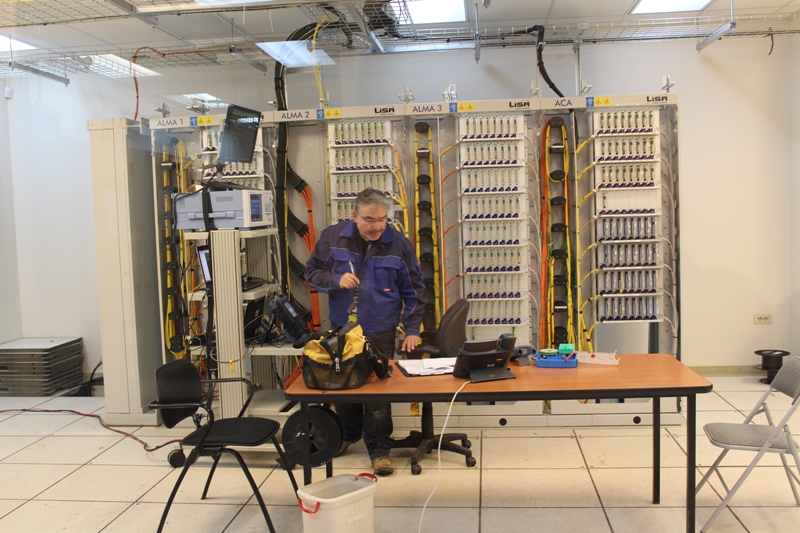
(Above) The server room at the high site.
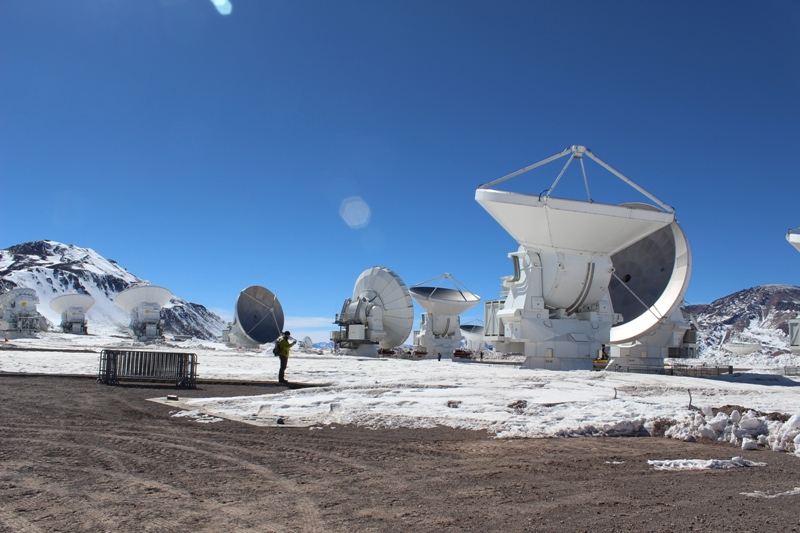

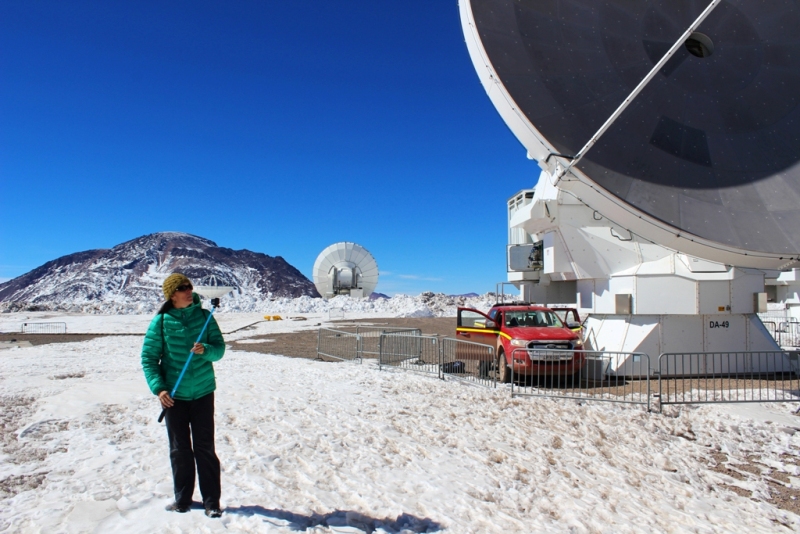
Look at that blue sky!
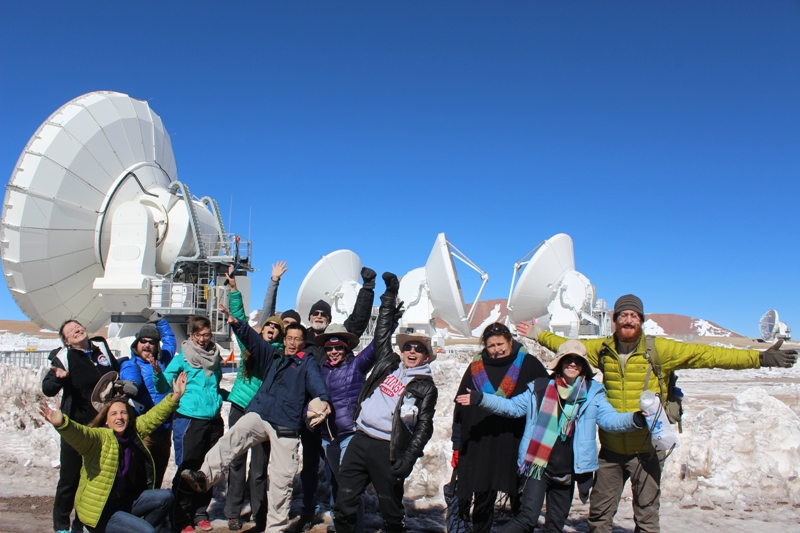
(Above) A common symptom of altitude sickness is lack of good judgement.
1) Introduction - Ed Goes to Chile!
2) The cities, towns, and villages - Santiago, La Serena, and San Pedro
3) The observatories and scientific installations (Part 1)
3a) The observatories and scientific installations (Part 2) (This page)